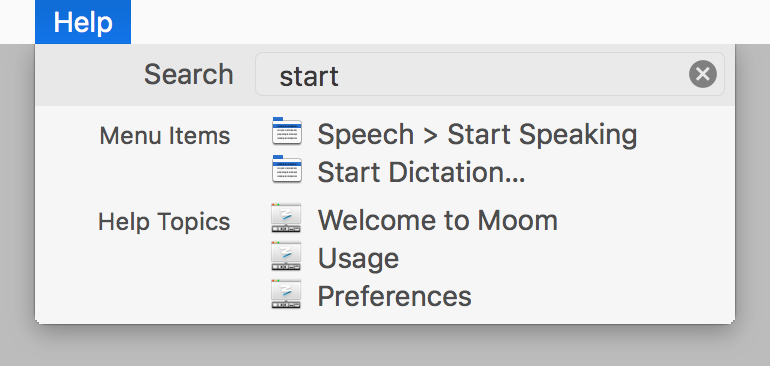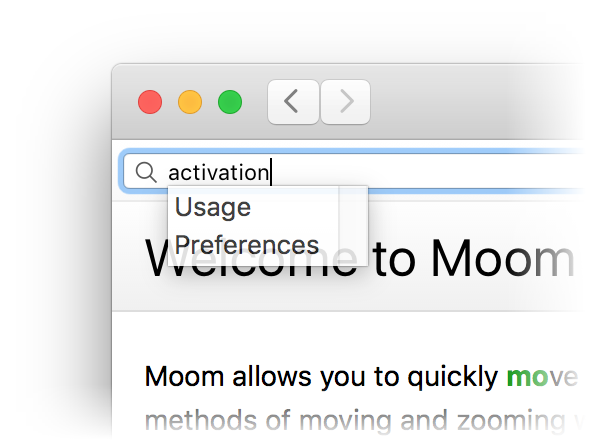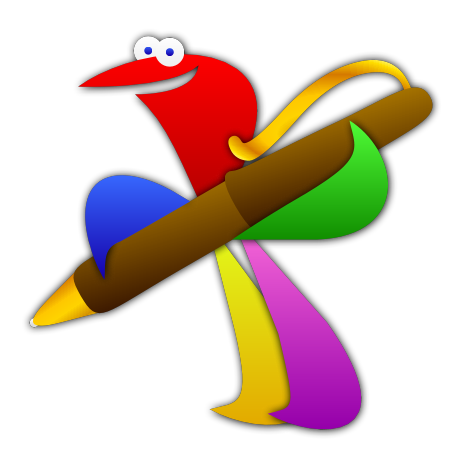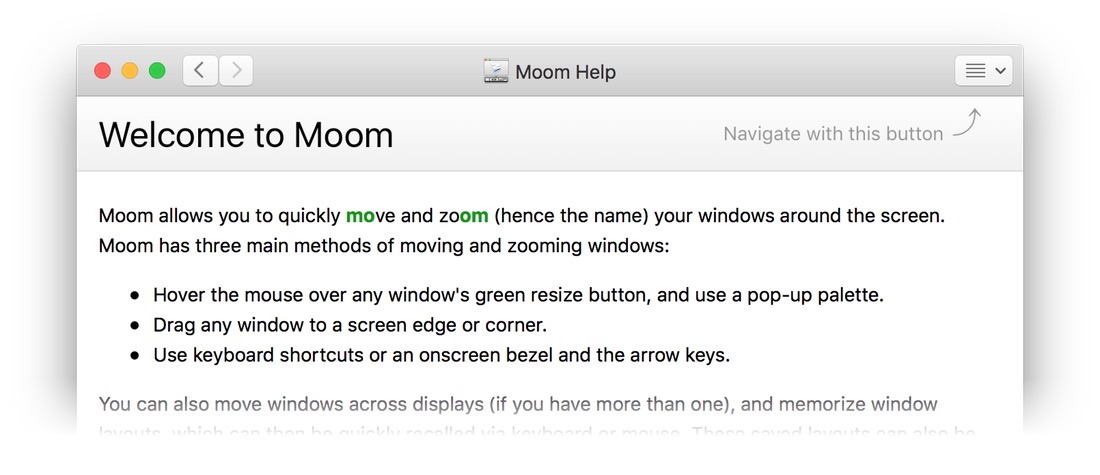Starting with our recent update to Keymo, we rolled out a new help system. We developed this new system to solve some aggravations we were having with Apple’s built-in help system, and to provide our users with a better help experience. This new help system will be rolling out to all our apps in the very near future.
Here’s a quick peek at the first screen of Moom’s new help:
There are many aspects to our new help system that should make in-app help work much better for our users—some new features, some existing features working better, and a revamped look and feel.
 First off, there’s a new navigation system, as seen in the image at right. Click the “hamburger” menu on any page, and this handy drop-down makes it simple to get wherever you need to go.
First off, there’s a new navigation system, as seen in the image at right. Click the “hamburger” menu on any page, and this handy drop-down makes it simple to get wherever you need to go.
The current section is always marked with a checkmark, so you’ll know exactly which page you’re on when you activate the menu.
The help window is also now a normal OS X window, not the “I will block everything!” floating window of Apple’s help system.
Our new help window is also visible to apps—like our own Witch—that list open windows; the built-in help viewer windows aren’t visible to Witch.
Like the built-in help viewer, the text in the help window is resizable—just press ⌘-Minus (smaller) and ⌘-Plus (larger) to resize. The help system will remember your preferred size even if you close and reopen its window. (It will reset to the default size if you quit and relaunch the app.)
Our help system features two types of search. The first, and to me the most useful, is the ability to search the entire help system from within the app’s Help menu. (Note that you must be running the app in “normal” mode to use this search—otherwise, it won’t have menus!)
To use the help-wide search, select the Help menu within the app, then just type in the search box. You’ll see matches for any menu items, and then any help pages that contain your search term:

Select one of the matches from the Help Topics section, and help will open to that page, with the matching term already highlighted.
You can also search the current help page by pressing ⌘-F; this drops down a standard OS X search box. Type your search, and the first match will be highlighted on the page:

Press ⌘-G and help will jump to and highlight the next match; repeat as necessary until you find the section you need. One nice bonus feature here is that if there are no matches on the current page, the help system will display a list of other help pages that do contain a match:

 Right-click on any open area of a page, and a handy contextual menu appears. You can use this to go back and forward between previously opened pages—though it’s easier to use the arrow buttons at the top of the window, or ⌘ and the left and right arrows if you prefer the keyboard.
Right-click on any open area of a page, and a handy contextual menu appears. You can use this to go back and forward between previously opened pages—though it’s easier to use the arrow buttons at the top of the window, or ⌘ and the left and right arrows if you prefer the keyboard.
There’s also a Reload button—this is there primarily for our use when writing help, but if you find yourself looking at a blank page, this may force the content to be reloaded.
But really, the important thing in the contextual menu is the ability to print help pages. Select Print… from the contextual menu, and a standard OS X print dialog appears:

If you’re an admirer of dead trees, click the Print button to send the output to your printer. But you may find it more useful to click the PDF button, and save a copy of the help page to PDF format—you could then add it to iBooks to read anywhere, for example.
We hope you find the new help system, well, helpful. We have plans to enhance it further in the future, but for now, it’s already a great improvement (for both us and you) over the old system.
 Many Tricks
Many Tricks

